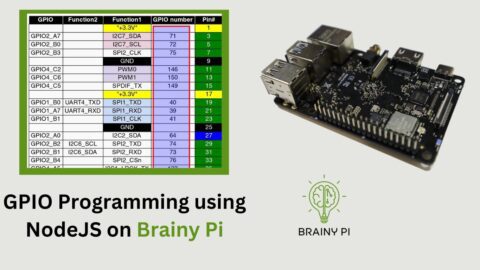Unexpected errors ? Don’t Panic! Your first Steps for Troubleshooting Brainy Pi Failures
Brainy Pi is a powerful single-board computer that runs Rbian based on Debian 11, a popular Linux distribution. While Brainy Pi is a reliable and robust device, failures can occur due to hardware, operating system, and application issues.
In this blog, we will help you with first few steps to troubleshoot Brainy Pi failures and diagnose issues at different levels. We will also show you how to pull up logs to identify the reasons for operating system and application failures.
Level 1

When software bugs or incorrect configurations arise, application failures may occur. To pinpoint the source of application failures, you can use the following steps:
First we need to find out if the application is running or not. We can do that by running this command
ps aux | grep application_name
This command will show a list of all processes currently running on the system, and filter the output to show only processes with the given application name. If the application is running, you will see its details in the output. If it is not running, you will see no output.
Once you have launched the application or confirmed that it is running, you can locate it in the roster of active services by using the following command:
sudo systemctl list-units --type=service --state=active
Hit
qto get back to the terminal.After finding the name of the service, we can read the logs to find the issue.
To read the logs run the following command(replace xxx.service with the name of the service)
sudo systemctl status xxx.service > app.log
This will copy the logs to the file
app.log. We can read this file usingnano
nano app.log
Level 2

When the operating system experiences problems due to outdated software, corrupted system files, or incorrect configuration, operating system failures may arise.
To inspect system logs for error messages or warnings, you can follow these steps:
Type in the command
sudo journalctl > syslog.log
This command will transfer the entire system log to a file named “syslog.log”
You can then transfer this file to your computer and review the system logs or use
nanoto view it in brainypi.
nano syslog.log
In majority of cases, we can fix the error by updating the operating system as it will fix bugs and fixing security vulnerabilities.
sudo apt update sudo apt upgrade -y
If the problem persists, try reinstalling the operating system from scratch. However, keep in mind that this will delete all your data.
Level 3

Hardware failures can have severe consequences as they can render the Brainy Pi device completely useless. Common examples of hardware failures include power supply problems, SD card corruption, and overheating. To identify hardware failures, you can follow these steps
To address the hardware issues, you can take the following steps:
Ensure that the power supply is connected and supplying adequate power to the device. You can also try using a different power supply to check if the problem is resolved.
Check if the device is overheating, as this can cause it to shutdown unexpectedly. Verify that the device is not located in a hot or humid environment and that there is proper ventilation.
If you are using an SD card instead of built-in emac, check the SD card for any damages or corruption. You can also try using a different SD card or reinstalling the operating system on the current card.
If you need further assistance, you can always reach out to the forums and post the logs there to get help.
For enterprise customers, we recommend using our ticketing system to raise a ticket if you require further assistance.









